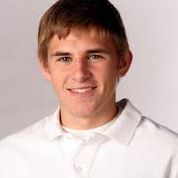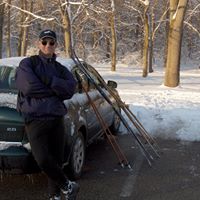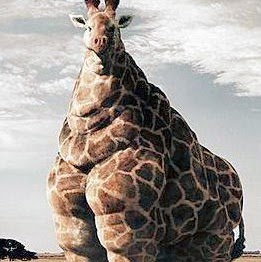James D Fall
age ~62
from Los Angeles, CA
- Also known as:
-
- Jim D Fall
- James F All
- Phone and address:
- 835 Larrabee St, Los Angeles, CA 90069
James Fall Phones & Addresses
- 835 Larrabee St, West Hollywood, CA 90069
- Los Angeles, CA
- 4222 8Th St, Long Beach, CA 90804 • 5624392536
- Sherman Oaks, CA
- 2835 Pacific View Trl, Los Angeles, CA 90068
Work
-
Position:Professional/Technical
Education
-
Degree:Associate degree or higher
Us Patents
-
Screw
view source -
US Patent:54335698, Jul 18, 1995
-
Filed:Sep 2, 1993
-
Appl. No.:8/116469
-
Inventors:James C. Fall - Northridge CA
Steven Schartzman - Northridge CA -
International Classification:F16B 2300
F16B 2500 -
US Classification:411387
-
Abstract:A self-drilling screw (10) having a body (16) that includes a driving head (18) and aperture (20) at its one end and a self-drilling tap (22) at its other end. Intermediate the length of screw (10) a solid annular member (24) comprising a peripheral edge (31) separating annular surfaces (32, 33) is formed. A plurality of radially extending serrations or teeth (36) is formed on the one annular surface (32), in a circumferential pattern paralleling the turning motion of the screw (10) in its application to a thin gauge metal deck structure (44). Two sets (26, 27) of different sized threads are formed on the body (16) between the surface (32) and the tap (22). As the serrations (36) gouged or coerce the metal during the achieving of a fully driven position for the screw (10), the larger sized threads (26) bind or tap-like to an upright boss (52) formed by the puncturing of the hole, first by the smaller sized set (27) of threads and then by the larger thread set (26). Screw (10) does not overturn to strip the thread set (26) in its larger hole (53) and a binding or tight engagement occurs between boss (52) and the threads in set (26).
-
Driver Apparatus
view source -
US Patent:47063807, Nov 17, 1987
-
Filed:Oct 8, 1986
-
Appl. No.:6/916643
-
Inventors:James C. Fall - Northridge CA
-
International Classification:B23Q 710
-
US Classification:29813
-
Abstract:An improved and novel lag screw driving apparatus whereby a screw along with a hanger formed thereon is threaded into a wooden ceiling member or the like from floor level. The apparatus comprises a handle having a wire magazine, a wire magazine loader mounted above the handle and through which wires have ingress to and egress from the magazine, a head or holder for an eye-screw mounted on the magazine loader, at least one pair of longitudinally-split sleeves spaced one from another and to which tubular members forming the magazine and the magazine loader are clamped. Each of the split sleeves includes a ledge from which smaller and larger bores in opposing directions extend. A clamping means across the split of each sleeve and to each side of the ledge is provided so that handle tubing and the magazine loader which are inserted into the bores of the sleeve are secured therein. Chamfers along the split are provided.
-
Head And Magazine Loader Assembly
view source -
US Patent:46898816, Sep 1, 1987
-
Filed:Jul 8, 1986
-
Appl. No.:6/883523
-
Inventors:James C. Fall - Northridge CA
-
International Classification:B23Q 710
B21F 700
B21F 1504 -
US Classification:29813
-
Abstract:This invention is found in the construction or configuration of the elements in the head of a driver apparatus utilized in securing screws in wooden members and to its relationship with a wire magazine loader mounted to the driving apparatus itself. The invention comprises a head member having a top and an outer wall which encompasses a cavity that forms crossed passageways extending to the top, openings in the outer wall communicating with cavity, atmosphere and magazine loader. The first of such cavity passageways is formed by vertically-oriented walls and a bottom, for containing an eyelet screw. A bar is provided at the bottom, in alignment with the first passageway for supporting the screw eyelet to which a hanger wire is to be threaded. The second of such cavity passageways is formed crosswise of the first, and includes tapering walls which converge upwardly to the top of the head, diverging downwardly to a point on the outer wall, however, not extending to the plane of the bottom of the head, but rather terminating some distance above the disposition of the bottom. Corresponding openings between such terminations and the bottom communicate with the second passageway so that a wire can be threaded through the screw's eyelet mounted in the first passageway.
-
Exercise Device And Method
view source -
US Patent:44874138, Dec 11, 1984
-
Filed:Sep 28, 1982
-
Appl. No.:6/425561
-
Inventors:James R. Fall - Santa Ana CA
-
International Classification:A63B 2300
-
US Classification:272125
-
Abstract:An exercise device for performing isometric exercises comprises a pair of vertical exercise bars, slidably mounted on a frame so that the spacing therebetween is adjustable. Each of these exercise bars mounts respective ring-shaped exercise handles. The exercise handles are rotatable, about a horizontal axis, and are movable, both vertically, along the bars, and rotatably, about the bars, to permit adjustment to virtually an infinite number of positions. The exercise device permits an improved form of isometric exercise, which is dynamic, rather than static. By applying force to the exercise handles or bars, and maintaining muscle tension as the user moves in a smooth, fluid motion to change his body position, the user's muscles are isometrically exercised throughout a continuous range of positions.
Resumes

Security Operations Manager
view sourceWork:
Disneyland Resort
Security Operations Manager
Security Operations Manager

James Fall
view sourceLocation:
Los Angeles, CA
Education:
La Salle College Preparatory - Pasadena, Ca

James Fall
view sourceLocation:
1735 east Ramsey St, Banning, CA 92220
Industry:
Hospital & Health Care

James Fall
view source
James Fall
view sourceIsbn (Books And Publications)

Shem Pete's Alaska: The Territory of the Upper Cook Inlet Dena'Ina
view sourceAuthor
James A. Fall
ISBN #
0938227009
Name / Title
Company / Classification
Phones & Addresses
Owner
Mark IV
Barber Shop
Barber Shop
630 City Pkwy W, Orange, CA 92868
7149717427
7149717427
JAMES FALL FLOWERS & PRODUCE, LTD
JIMMY & NICK'S, INC
NICK'S STEAKHOUSE LLC
President
Life Expander, Inc
12901-A1 Harbor Blvd, Garden Grove, CA 92840
President
INTERIOR PROJECTS, INC
9531 Melvin Ave, Northridge, CA 91324
President
Lagger Limited
Ret Lumber/Building Materials
Ret Lumber/Building Materials
7921 Canoga Ave, Woodland Hills, CA 91304
8187100265
8187100265
Wikipedia

James Fall
view sourceFrom Wikipedia, the free encyclopedia. Jump to: navigation, search. Captain James Fall (pronounced Faw), MP for Haddington Burghs (1734-1742), in Scotland. ...
Flickr
Classmates

James Fall
view sourceSchools:
Clayton High School Clayton WI 1981-1984
Community:
Bob Bobby, Reva Allen, Eduardo Vallejos

James Fall, New Paltz Hig...
view source
James Fall
view source
James Fall
view source
James Fall
view source
James Fall
view source
James Fall
view source
Mamadou Fall James Fall
view source
James Fall
view source
James Fall
view sourceYoutube
Googleplus

James Fall

James Fall
Plaxo

James Falls Neill V
view sourceLos Angeles, CA
Get Report for James D Fall from Los Angeles, CA, age ~62













